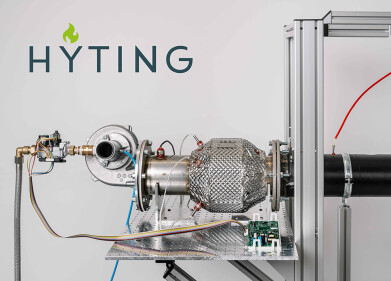Green Energy
How to Charge a Battery with Mud!
Jul 18 2015
If you studied science in high school, you might remember constructing a battery from a potato. Employing similar ideas but on a more complex scale is the MudWatt, a DIY kit available for purchase which aims to teach children about power production through the use of mud.
It allows the user to assemble their own mini-battery using mud taken from anywhere in the world, which will generate enough electricity to power small electronic devices such as clocks, alarms or LED lights.
The idea was pioneered by business partners and science geeks Keegan Cooke and Kevin Rand, who came up with the idea after conducting research on bacteria collected from the ocean and manipulating them to create fuel cells.
Common as Muck
The MudWatt works on a similar principle to the fuel cells created from bacteria during their investigations. Small microorganisms, known as geobacter and shewanella, live in pretty much every single variety of soil on Earth. They survive by consuming natural sugars they find in the mud, and they excrete electrons as waste material.
These electrons are then captured by the MudWatt’s battery anode once it is introduced to a mud source. They are then sent through a wire up to a cathode, where protons and oxygen react with the electrons and create H20. This closes the circuit and allows for the creation of electricity, albeit on a small scale.
The product is interesting in that it allows all types of soil or mud to be used, which means kids can compare and contrast the bacterium and their power-producing properties from a variety of sources. Indeed, the battery could theoretically last forever, should the microorganisms continue to live and prosper in the sample.
More Practical Renewable Chargers
We’ve all heard of solar chargers, which have been around for more than a decade and which offer the ability to charge phones, cameras, mp3 players and other small devices by harnessing the power of the Sun. However, there’s only one problem with these ingenuous little machines – they do need sunshine to function properly, which in a climate as prone to cloudiness as Britain’s, can often pose a problem.
While the MudWatt is perhaps more useful as a science experiment than a viable means of charging electronics, there are a number of other innovative ways in which we harvest unlikely sources of power. For example, the article How to Charge Your Phone with Sweat talks about an exciting investigation conducted by Dr Wenzhao Jia and his colleagues at the University of California, which uses perspiration and the natural processes of the human body to provide excess energy for Smartphones and similar devices.
Meanwhile, portable wind and water turbines work in much the same way as their industrial counterparts, although on a much smaller scale. Using the property of diffusion to harvest energy from a heat source is also an increasingly popular method of generating electricity for a much-needed boost when away from the grid.
Of course, charging your gadgetry immediately from electrical sources is one thing; storing this power is quite another. To learn about how renewable energy is being kept for a rainy day in a multitude of unexpected and unusual ways, check out this article.
Events
Nov 26 2024 Paris, France
Nov 27 2024 Istanbul, Turkey
H2O Accadueo International Water Exhibition
Nov 27 2024 Bari, Italy
Biogas Convention & Trade Fair 2024
Nov 27 2024 Hanover, Germany
Dec 11 2024 Shanghai, China





-as-feedstock.jpg)








